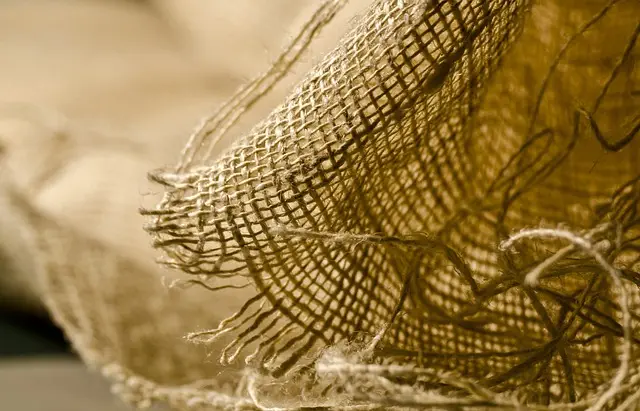Red Borneo Kratom Capsules are derived from the Mitragyna speciosa tree and are recognized for their potential health benefits, particularly pain relief and sedative effects. These capsules contain alkaloids that can engage with opioid receptors in the body. Optimal alkaloid production is dependent on the plant being cultivated under conditions similar to its natural Southeast Asian habitat. Growing kratom plants successfully requires careful selection of a compatible strain and climate, along with attention to soil pH (5.0-7.5), organic-rich well-draining soil, partial shade to protect against sunlight damage, regular watering to avoid overwatering and root rot, and sparing use of balanced slow-release fertilizer. Monitoring plant health for timely intervention is essential, as is determining the right harvest time based on leaf maturity. Post-harvest, careful drying at moderate temperatures without direct sunlight in a single layer is necessary to maintain alkaloid levels. The encapsulation process preserves product integrity and enhances user experience. Ensuring high-quality Red Borneo Kratom capsules involves adhering to precise cultivation and processing practices from the initial soil preparation to the final capsulation, which in turn reflects the meticulous cultivation efforts required to maintain the plant's unique properties.
Embark on a journey into the world of natural wellness with Red Borneo Kratom Capsules, a botanical extract gaining attention for its potential benefits. This article delves into the origins and effects of these capsules, providing a comprehensive understanding of what sets them apart. Additionally, discover the art of cultivating Mitragyna Speciosa, the kratom plant, with actionable tips to grow your own at home, as explored in “How to Grow Kratom Plants.” Finally, uncover the intricacies behind maximizing potency through optimal harvesting, drying, and encapsulation methods, ensuring you get the most from each capsule. Explore these aspects and more within this insightful guide on Red Borneo Kratom Capsules.
- Understanding Red Borneo Kratom Capsules: Origins and Effects
- The Cultivation of Mitragyna Speciosa: Tips for Growing Kratom Plants in Your Garden
- Maximizing the Potency of Red Borneo Kratom Capsules: Harvesting, Drying, and Encapsulation Processes
Understanding Red Borneo Kratom Capsules: Origins and Effects

Red Borneo Kratom Capsules are a botanical supplement sourced from the leaves of the Mitragyna speciosa tree, native to Southeast Asia. The capsules offer a concentrated form of the plant’s alkaloids, which are thought to interact with the body’s opioid receptors, potentially providing pain relief and other therapeutic effects. Kratom plants thrive in their natural environment, where they can receive ample sunlight and rainfall. Cultivation outside of these regions requires careful attention to mimic these conditions for optimal alkaloid content, which is crucial for the capsules’ efficacy. Understanding how to grow kratom plants is essential for anyone looking to produce high-quality Red Borneo Kratom.
The effects of Red Borneo Kratom Capsules are often described as calming and analgesic, making them a popular choice for individuals seeking relief from anxiety or chronic pain. Users report feelings of euphoria and well-being alongside these sedative properties, which can be particularly beneficial before bedtime. The capsule form is especially convenient, as it offers precise dosing and avoids the bitter taste of raw kratom leaves. It’s important to approach the use of these capsules with caution, adhering to recommended dosages and consulting healthcare professionals, especially when used in conjunction with other medications or treatments. The unique characteristics of Red Borneo Kratom are a testament to the care involved in its cultivation and the intricate balance of its active compounds.
The Cultivation of Mitragyna Speciosa: Tips for Growing Kratom Plants in Your Garden

Cultivating Mitragyna speciosa, commonly known as kratom plants, can be a rewarding endeavor for gardeners interested in this botanical species. The process involves careful consideration of climate, soil conditions, and light exposure to ensure optimal growth. One of the key aspects of how to grow kratom plants is selecting the right strain for your region’s climate. Kratom is native to Southeast Asia, where it thrives in humid, tropical environments with consistent rainfall. To replicate these conditions, gardeners should consider using raised beds filled with well-draining soil rich in organic matter. The pH level of the soil should ideally be between 5.0 and 7.5, leaning slightly acidic to alkaline.
Kratom plants prefer partial shade to full sunlight, as direct sunlight for extended periods can scorch the leaves. In regions with less natural rainfall, regular watering is essential, but care must be taken to avoid overwatering, which can lead to root rot. Consistent moisture in the soil, particularly during dry spells, helps maintain healthy foliage and encourages plant growth. Additionally, fertilization should be done with caution, as excessive nutrients can be detrimental. A balanced, slow-release fertilizer applied throughout the growing season can provide the necessary nutrients without causing harm. Monitoring the health of your kratom plants regularly will help you address any issues promptly, ensuring a bountiful harvest of mature leaves that can be used for their desired effects or processed into capsules for consumption.
Maximizing the Potency of Red Borneo Kratom Capsules: Harvesting, Drying, and Encapsulation Processes

Growing high-quality Mitragyna speciosa, commonly known as kratom, is a meticulous process that plays a pivotal role in determining the potency of its alkaloid content. Red Borneo Kratom capsules are revered for their relaxing and pain-relieving effects, which stem from the leaves’ unique composition. To maximize the efficacy of these capsules, careful attention must be paid to the cultivation practices. The optimal soil conditions, consistent humidity, and ample sunlight are crucial for kratom plants to thrive. Harvesting occurs when the leaves exhibit the desired maturity, a stage that can be identified by experienced growers through visual cues such as leaf color and size. After harvest, drying is a critical step; it must be carried out with precision to avoid compromising the alkaloid concentration. The leaves are laid out in a single layer, away from direct sunlight, and allowed to dry slowly at a consistent temperature to preserve their active components. Finally, the dried leaves are encapsulated. This process encases the powdered kratom leaves in a capsule, which not only preserves the integrity of the product but also enhances its user-friendliness. The quality of the capsules is directly influenced by the purity and potency of the leaves at the time of drying and encapsulation. Therefore, adhering to best practices from seedling to shelf is imperative for cultivators who aim to produce high-potency Red Borneo Kratom capsules that deliver consistent effects. For those interested in how to grow kratom plants, it’s essential to follow a regimen that supports the plant’s natural growth cycle and maintains its alkaloid profile, ensuring that the final product is both potent and safe for consumption.
Red Borneo Kratom capsules offer a unique blend of alkaloids that contribute to their distinctive effects, which many users find beneficial for relaxation and stress relief. For those intrigued by the cultivation aspect, it’s worth exploring how to grow kratom plants as a means to ensure the quality and potency of your harvest. The process involves careful attention to the plant’s conditions and optimal drying and encapsulation techniques to preserve its active compounds effectively. By understanding the origins of Red Borneo Kratom and mastering its cultivation, enthusiasts can enjoy this botanical’s potential benefits while contributing to the sustainability of kratom as a natural wellness resource.






